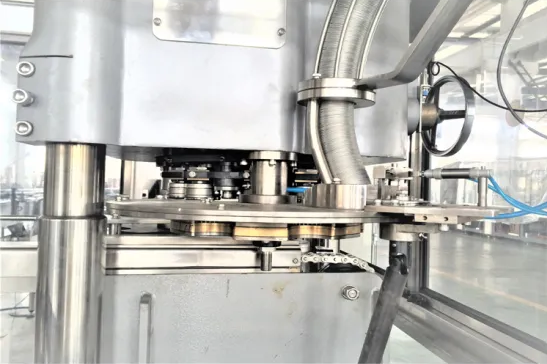December is the month when evergreen gets to shine. Douglas firs ringed with twinkling lights fill living rooms. Wrapped gifts await anxious hands beneath needled branches. Spruce and pine trees tower alongside ski slopes topped with powdery promise. Instead of just admiring those trees, why not drink them?
To better savor winter, breweries and distilleries are plucking pine cones, harvesting resinous needles and trimming spruce buds to create beers and spirits that are both cure and companion to the cold. In short, they're bottling the essence of evergreen. Water Bottling Line

“When I smell spruce tips, it reminds me of being outdoors in wintertime,” says Alex Meyer, head brewer at Upslope Brewing in Boulder, CO. The brewery’s cold-weather seasonal is Spruce Tip IPA, a taste of “skiing in Colorado, where you get that big whiff of pine and fresh air.”
Distilleries are also going out on a limb. Tamworth Distilling in New Hampshire produces Garden Apiary Gin with juniper berries and aged pine rosin, as well as a limited-release Garden Spruce Gin. “Spruce is a natural partner to juniper,” says distiller Matt Power, adding that such combinations in drinks can create powerful “olfactory special effects.”
We’ve sniffed out a foursome to try around a fire.
This warming, wintry IPA is brewed with Colorado spruce tips. Upslope complements their coniferous contributions with Cascade and Simcoe hops, the latter lending notes of pine. Still not “holiday” enough for you? It’s also highlighted with hints of candied orange peel.
The Ponderosa pine trees growing atop Atalaya Mountain, a 9,100-foot peak in the Santa Fe National Forest, inspire this elevated liqueur. For six months, the distillery barrel-ages its Silver Coyote single-malt whiskey with roasted piñon before finishing it with pine resin.
This taste of the Granite State is spiked with balsam poplar buds and pine rosin—aged pinesap that’s less harsh and astringent. Says Power, “Older aromas offer unique opportunities to accent fresh smells without overlapping and muddying their individual characters.”

Bottle Blowing In 1939, Oregon selected the Douglas fir as its official tree. Clear Creek harvests the conifer’s springtime buds and adds them to its eau-de-vie, a kind of un-aged brandy. The infusion is redistilled, before additional buds are added to amplify the bracing forest scent.